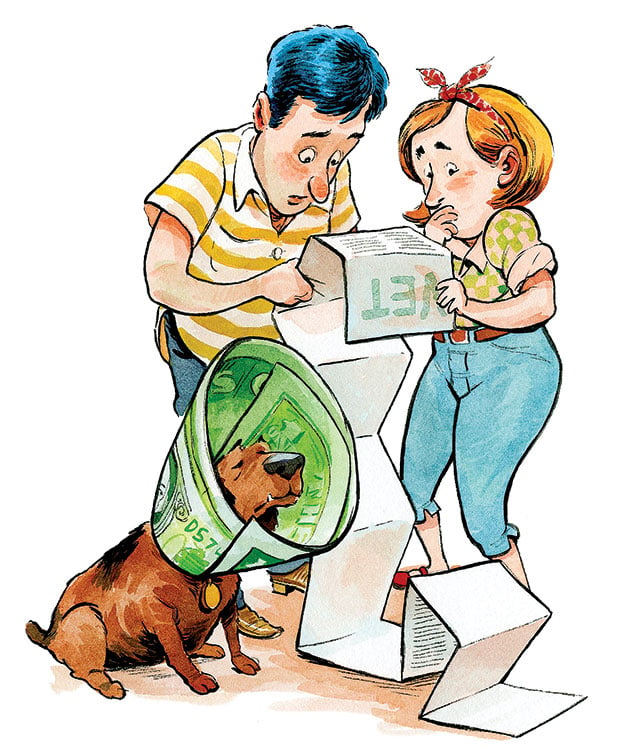Imagine: You’re checking out at the vet’s office when the receptionist gives you the bad news. Those prescriptions the doctor wrote for your beloved Pomeranian are going to run you $300. You weren’t expecting this, but your dog needs the medication, and there do seem to be some friendly faces in the waiting room. Maybe if you ask nicely enough, they’ll chip in.
Cringing yet? Just the idea of hitting up strangers for money makes a lot of people uncomfortable. But with a computer screen as a buffer, some pet owners are doing precisely that, using websites that allow them to “campaign” online for contributions toward vet expenses.
According to the industry site Crowdsourcing.org, crowd-funding efforts raised $2.7 billion in 2012, and they’re getting more popular. Bands use them to fund their albums, wannabe inventors to finance their gimmicks. Over the summer, a DC man raised more than $30,000 on the site Kickstarter to get Kenny Loggins to play a concert in his living room—seriously. By comparison, crowd-funding vet bills seems pretty reasonable.
In his dog Lily’s case, Eric Rogusky says it was a last resort. Less than three years after he and his wife welcomed the black rescue Maltese/Yorkshire-terrier mix into their Centreville home, Lily started having trouble jumping onto the bed. “She couldn’t judge the distance or the height anymore,” says Rogusky. “Then we started noticing the discoloration in her eye.” The diagnosis was a shock—premature cataracts that would likely cause the animal to go blind if left untreated.
The $7,000 cost of her two surgeries (one for each eye) was a big financial stretch. The couple relied on credit cards, and two years later they’re still paying off the debt. So when they found out last year that the retina in the dog’s right eye was becoming detached and would require more surgery, Rogusky turned to the website GoFundMe.
Two months in, Lily’s campaign has raised $235, more than $3,000 shy of Rogusky’s goal. Salvador Briggman, founder of CrowdCrux, a blog that gives crowd-funding advice, says a lack of regular communication might be the problem. “You must interact with your backers on a consistent basis,” he says.
Michelle Rodger, a director at the Crowdfunding Centre, which studies the industry, suggests pet owners take advantage of the internet’s fascination with all things cute. “I’d focus on a great video featuring the pet,” she says. “Find pet-loving groups and reach out to them to share your campaign.”
Holly Dunne of Gaithersburg decided to try crowd-funding for her 11-year-old black Lab/Newfoundland mix, Bogie, after he ate five socks and wound up in the animal ER. The bill reached more than $2,000, which wasn’t affordable for Dunne, who had spent the previous three years working temp jobs. The vet allowed her to pay $700 up front, and she has to take care of the rest in installments.
Twenty days into her campaign, she’s gotten donations totaling $250. In addition to strangers, she’s approaching family and friends. “I’m asking them, instead of getting me something for Christmas, to contribute.” She’s encouraged by her progress but wants to build more momentum.
So does Rogusky, who for now is focusing on helping Lily enjoy what eyesight she has left. One of the dog’s favorite activities is taking in the view from the car window. “If she wants to go in the car, I just take her around the neighborhood or make excuses to go through a drive-through,” Rogusky says. “I would do anything for my dog.”
This article appears in the December 2014 issue of Washingtonian.


















